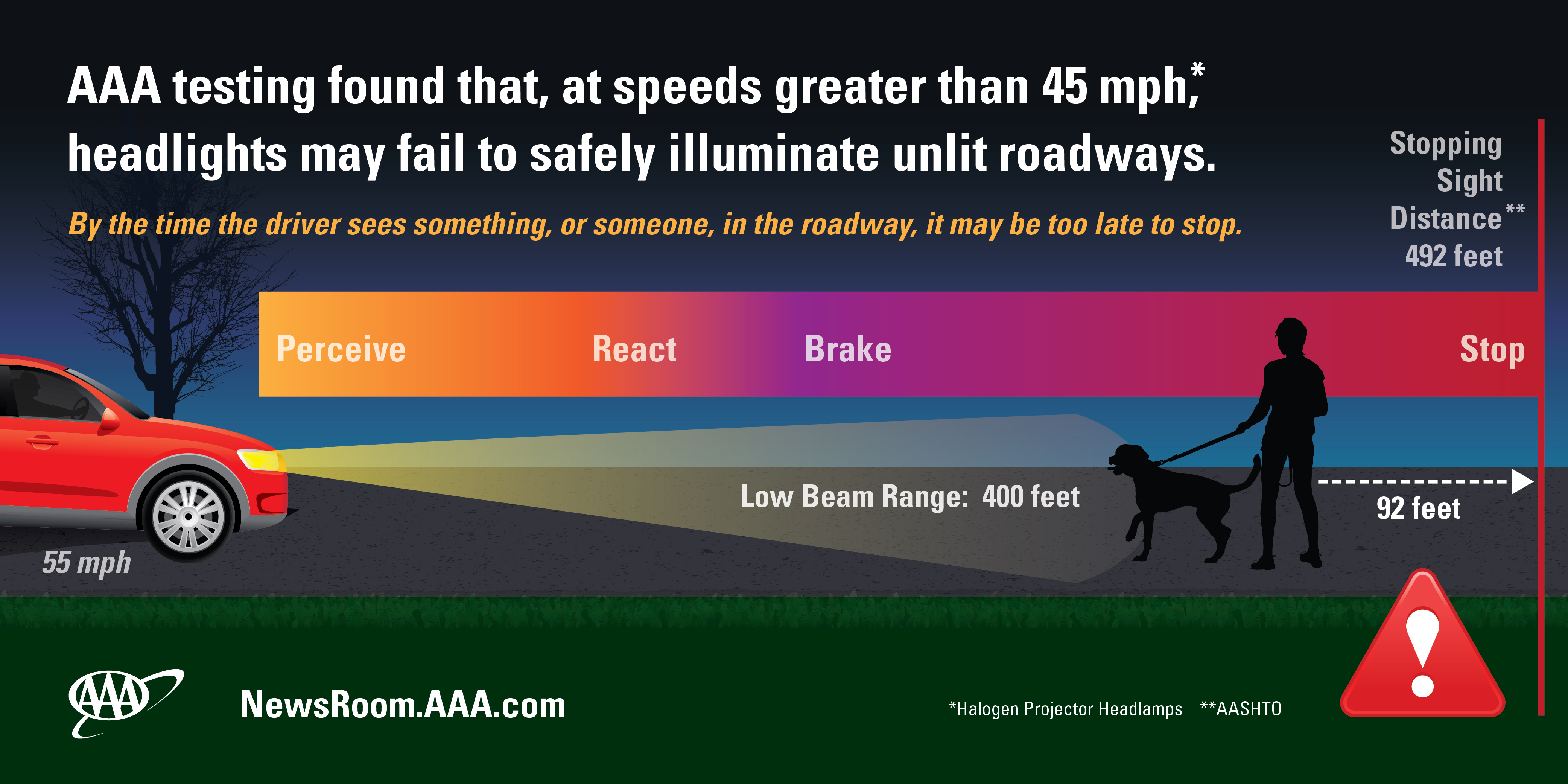New test results from AAA indicate that even with the most advanced headlight systems, a motorist's ability to see an object on rural roadways at night can be reduced by as much as 60 percent compared to driving in daylight. AAA's test results suggest that halogen headlights, found in over 80 percent of vehicles on the road today, may fail to safely illuminate unlit roadways at speeds as low as 40 mph.
The testing, conducted with the Automobile Club of Southern California's Automotive Research Center, measured the distances at which modern headlights illuminate non-reflective objects on both low-beam and high-beam settings. These findings, paired with guidelines issued by the American Association of State Highway and Transportation Officials, indicate that when traveling on unlit roadways, today's headlights do not light the full distance necessary for a motorist to detect an object or obstacle in the roadway, react and come to a complete stop.

"AAA's test results reveal that headlights found in U.S. vehicles fall short on safety." said Megan McKernan, manager of the Automobile Club of Southern California's Automotive Research Center. "By failing to properly light roadways at moderate speeds, a pedestrian or animal may not become visible to a driver until it's too late to stop."
The high-beam settings on halogen headlights improved sight distances by 28 percent at the testing facility; however, in real-world conditions they may only provide enough light to safely stop at speeds of up to 48 mph, which would leave motorists vulnerable at highway speeds. Despite the clear need for the additional visibility that high-beams offer, particularly on unlit roads, a recent AAA survey found that only a third of Americans admit to using these settings regularly.
Additional testing found that while the advanced headlight technology found, high intensity discharge (HID) and light emitting diode (LED) headlights illuminated dark roadways 25 percent further than their halogen counter parts, they still may fail to fully illuminate roadways at speeds greater than 45 mph. High-beam settings on these advanced headlights offered significant improvement over low-beam settings, lighting distances of up to 500 feet (equal to 55 mph). Despite the increase, even the most advanced headlights fall 60 percent short of the sight distances that the full light of day provides.
In addition to testing low-beam and high-beam headlight performance, AAA tested the effect that deteriorated headlight lenses have on light intensity and glare. The protective coating used on the plastics of modern lenses can slowly deteriorate and cloud after about five years, reducing light output and increasing light scatter which results in glare for other drivers. The testing found that restoring headlights doubles the maximum light intensity and reduces glare-producing light scatter by up to 60 percent. Yet, according to a recent AAA survey, only 20 percent of Americans have performed this service.
"Cloudy headlights can cause safety issues while driving at night" said Montrae Waiters, AAA spokeswoman. "Motorists can purchase headlight restoration and cleaning kits to restore headlights to new. This will greatly increase driving safety."
AAA RECOMMENDATIONS FOR NIGHTTIME DRIVING:
- When driving at night on unlit roadways, use high beams whenever possible.
- Monitor and adjust driving speeds when traveling on unlit roads at night to allow enough time to detect, react and stop the vehicle in order to avoid striking pedestrians, animals or objects in the roadway.
- If your car's headlamp lenses are not crystal clear, have them restored, this will provide a noticeable increase in visibility, and reduce the glare from other motorist.
- If you are 60 or older and headlight glare is an issue, have your eyes checked by a medical professional. Cataracts that cloud the eye's lens may be contributing to the problem.





